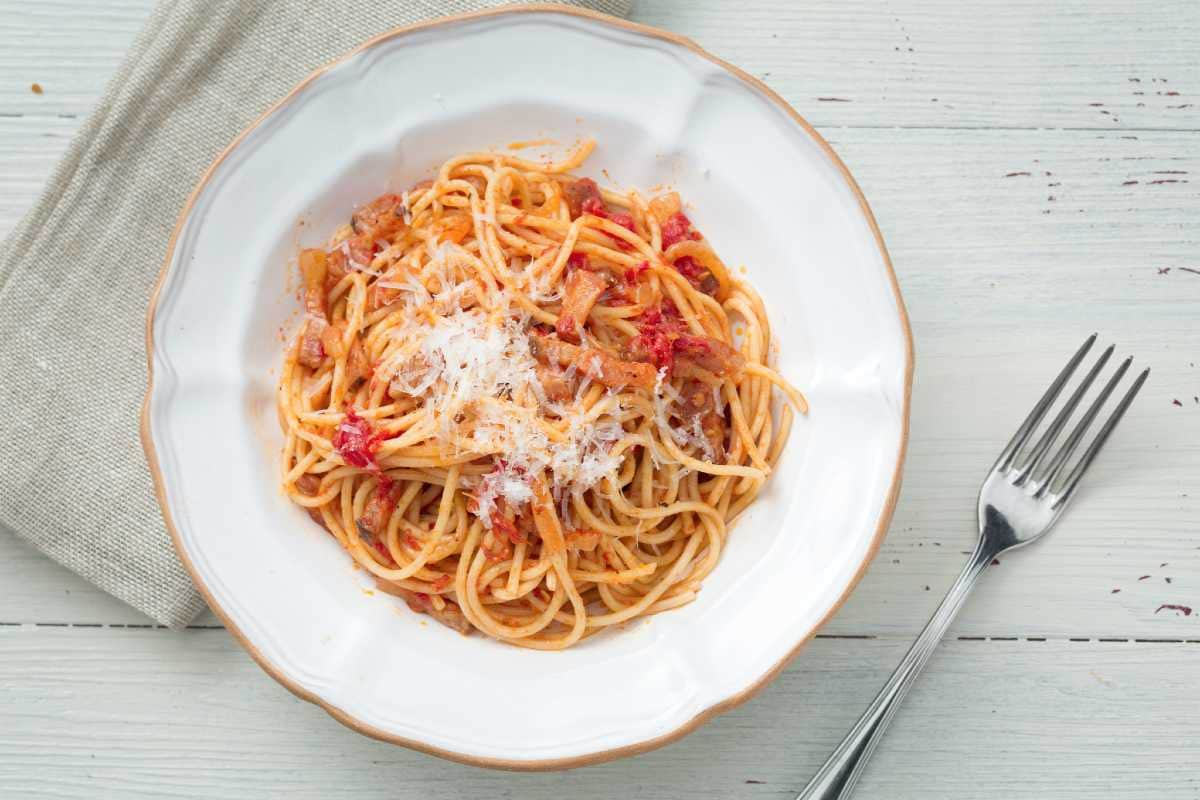Spaghetti alla Nerano (spaghetti with zucchini)
- Easy
- 35 min
- Kcal 245


Big family dinners and easy weeknights both feel easier with Spaghetti Amatriciana, a classic American comfort food with strong Italian roots that’s become a real favorite for all ages.This pasta stands out for its soft, tender spaghetti covered in a rich tomato sauce loaded with smoky guanciale and just enough spice to keep things interesting.Bright sweet tomato blends with a hint of boldness from cured pork, creating that savory iconic flavor every home cook wants—DELICIOUS and totally satisfying. No wonder so many American families appreciate this dish for its good, hearty character.You’ll notice a nice shiny finish on the noodles and a classic brick-red color that looks really good with simple garnishes or left plain for picky eaters.It’s easy to give this meal a homey feel that everyone recognizes (works great for Sunday suppers, gatherings, or just when craving simple comfort food that always satisfies). With lots of regional American variations out there, it gives you even more reasons to enjoy it often.
Families with full schedules love Spaghetti Amatriciana since it fits all kinds of meal moments—casual dinners, festive weekends, or make-ahead lunches work well because it’s such a versatile go-to.Busy parents rely on this dish’s dependable flavor and ability to make everyone happy at the table (even little ones who usually skip sauce), while home cooks keep coming back thanks to its consistent, easy-going taste.Toss on a little pecorino or some fresh herbs to dress it up on special days…or just leave it simple to suit the pickiest palate.Either way, the nice, soft texture and bold flavor combine the best of traditional American pasta dishes—lots of good taste, eye-catching appeal, and reliable results every time.Plenty of folks add their own spin using types of cured pork or basic pantry swaps, so it’s a practical way to bring something great to any table and keep family eating routines stress-free.That’s what makes it a true classic: warm, satisfying, always READY when life gets busy, and just as welcome at a party as on a regular Tuesday night.
You might also like:

To prepare spaghetti Amatriciana (spaghetti with tomato and bacon), first boil the water to cook the pasta in, then add salt. Prepare the sauce: take the guanciale, remove the pork rind 1 and cut it into slices about 1/4-inch (1 cm) thick 2 then into strips about 1/8-inch (1/2 cm) wide 3.

Heat a drizzle of oil in a pan, preferably a stainless steel skillet, add the whole chili pepper 4 and the guanciale cut into strips 5; brown over low heat for 7-8 minutes until the fat has melted and the meat is crunchy; stir often to prevent it from burning. Once the fat has melted, pour in the white wine 6, turn up the heat and let it evaporate.

Transfer the guanciale to a plate 7 and set aside, pour the peeled tomatoes into the same pan, breaking them up with your hands directly into the cooking liquid 8, continue cooking the sauce for about 10 minutes. As soon as the water boils, pour in the spaghetti 9 and cook them al dente.

Add salt to taste, remove the chili pepper from the sauce 11, add the guanciale strips to the pan 12 and stir to mix.

Once the spaghetti are cooked, drain them and add them directly to the sauce in the pan 13. Sauté the pasta very quickly to mix it well with the sauce. If you like the pasta al dente you can turn off the heat otherwise pour a little of the pasta cooking water to continue cooking. To finish, sprinkle with grated pecorino cheese 14: your spaghetti all'Amatriciana is ready to be served 15!